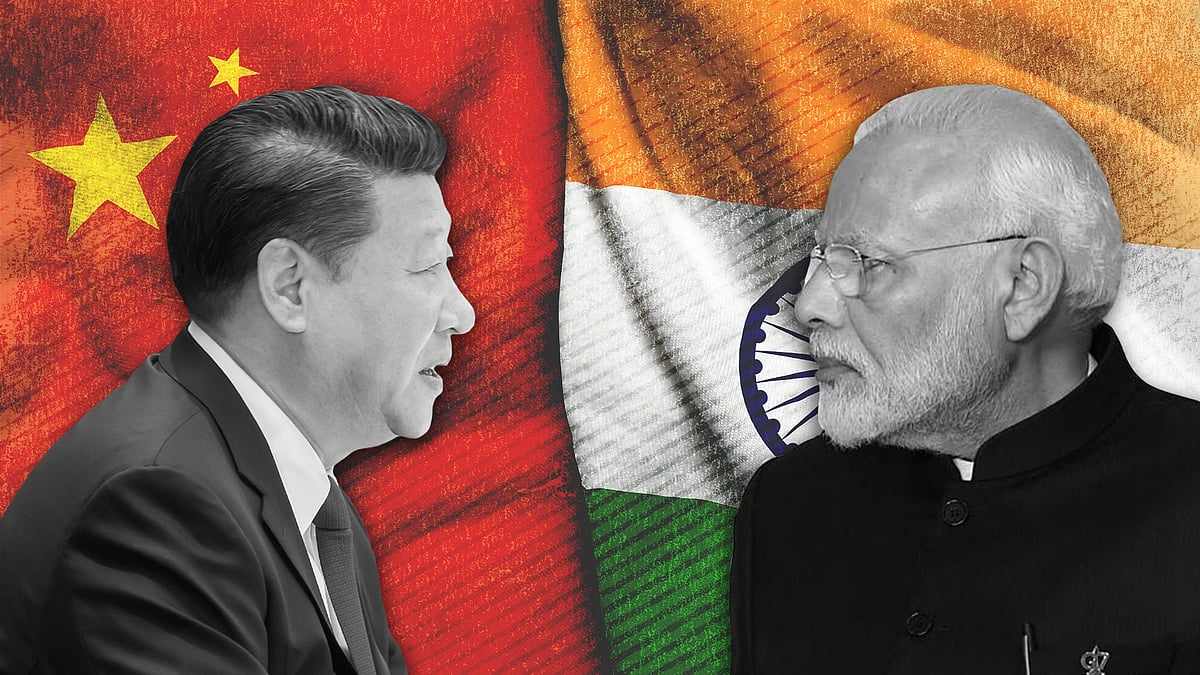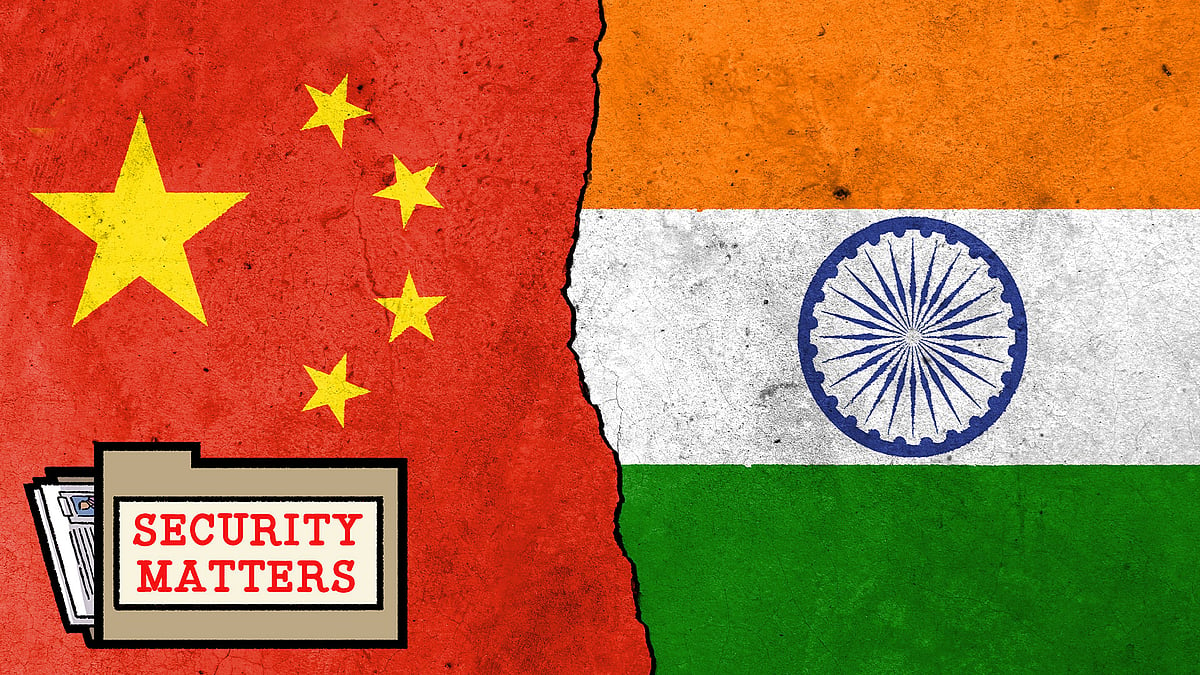The Galwan Valley fight was a sobering lesson for China
The Indian government and the media, that balked at robustly owning the soldiers’ bravery for almost a week, should learn chutzpah from them.
From all accounts, it seems that the fight put up by Indian soldiers at Galwan, Ladakh, on the night of June 15 was the stuff of legends.
Soldiers of the 16 Bihar Regiment were apparently fizzing with rage when their commanding officer was brought down pretty early in the fighting. And as word spread that a CO sahib was down, even the reinforcements that joined them are said to have swept in like a raging hurricane.
I am told that Signals men and at least one nursing assistant rushed up to join the fighting, yelling blood-curdling war cries. Lt Gen Rakesh Sharma, a former commander of the Leh-based XIV Corps and a distinguished fellow at the army’s think-tank, said the soldiers showed a “ferociousness that the Chinese wouldn’t have imagined”.
One group of 16 Bihar is said to have grabbed that symbol of the infantry — the bayonet — and made a hair-raising charge. One doubly trained soldier, Gurjit Singh, apparently wrought deadly mayhem single-handedly, displaying the sort of prowess one might expect in a Rajnikanth film. The Sikhs and Gorkhas had sharp-edged accessories ready at hand, of course, though not vicious ones like the Chinese used.
Most accounts of the battle say the Indians were outnumbered for most of the night. An officer whose job involves keeping close tabs on what is happening in Ladakh even said they were outnumbered 10 to one. Yet, as I wrote when almost nobody was saying so, the outnumbered Indians gave as good as they got.
There is no confirmation of Chinese casualties but most accounts say there were many injured and dead. There is talk of necks broken in close combat and a large number falling into the Galwan river.
By dawn, some soldiers and officers of each side remained with the other. Crucial for the exchange that followed was a Chinese (second-in-command) lieutenant colonel, according to reliable accounts. Seeing that he looked important, some of the ebullient Sikhs had grabbed and lugged him back to the Indian side.
The exchange of those who had got left behind on the other side was evidently not smoothly coordinated, giving the Chinese the upper hand when they retained 10 men, including officers. That was probably one reason for the government’s silence for the first couple of days.
Trap defeated
I have tried to piece together what happened through conversations with serving and retired officers, including two former Ladakh Corps commanders, a former brigadier general staff of the Corps, and a former commander of the 114 Brigade, which was then in charge of Galwan and remains in charge of Hot Springs and Pangong Tso.
But the most important aspect of what happened that night is not a blow-by-blow sequence, or a competitive score. Rather, the Chinese brutality as much as the extraordinarily gritty response of India’s soldiers made it a watershed battle.
As former ambassador to China, Gautam Bambawale, noted: “As far as the broader relationship is concerned, because of these reasons — one, that the Chinese have fundamentally violated all our agreements on the maintenance of peace and tranquillity; two, they are trying to unilaterally define the LAC; and three, the fact that lives have been lost on both sides after a gap of many decades — I think this is an inflection point in India-China relations.”
What’s important about that night is that the troops followed the army chief’s advice, which I had advocated in an earlier column, to push back in the early stages of a Chinese incursion. The Chinese top brass, and their political bosses, must have been sobered by the way that battle went.
It was not the way they intended.
It seems that the Chinese were lying in wait to teach the Indian party a lesson. (That raises questions about intelligence — that China evidently had it, and India didn’t — but that’s another story.) They had ready medieval implements including rocks and bunches of sticks studded with iron nails.
Soon after fighting broke out, a large number of Chinese troops, who had been lurking close, descended on the Indians. After Indian reinforcements rushed in, hundreds more came down from the Chinese side.
Their medieval weapons were a dumbed-down micro-version of what the then US defence secretary Donald Rumsfeld liked to call “shock and awe” when the US army swept into Iraq — a coercive demonstration, meant to scare the opponent army into wilting. Whoever planned the ambush may have expected the Indian soldiers, severely outnumbered and beaten by those ghastly weapons, to run away. The army’s morale would be dampened, and the brass chastened, they must have figured.
Strategic lessons
First, the way things turned out instead demonstrated that combat with the Indian army could prove costly. The true success of those soldiers was that this message got conveyed.
Not only that, the mission of the soldiers who went in initially was accomplished. Plus, I believe some engineers and Gorkhas brought down some other things that imposed a cost on the enemy. Given how massively China has deployed along India’s borders, the value of those messages should not be underestimated.
Third, the intensity of the Galwan fight and the resultant casualties demonstrated that a conflagration could burst unplanned amid sabre-rattling — like the First World War did. Since it is crystal clear that neither side wanted those sorts of casualties, this too is an important takeaway for the Chinese leaders who initiated the massing of forces.
Fourth, it demonstrated that Indian troops in a micro-theatre of war were capable of wreaking havoc on their enemy even without communication from higher authorities such as the army headquarters or their political bosses. This is an extremely important lesson for a power like China which excels in cyber warfare. China’s People’s Liberation Army counts among its greatest strengths the ability of its cyber resources to disrupt satellites and the command and control networks of an opponent.
Fifth, the unexpectedly high casualties at Galwan brought the massing of China’s troops on India’s borders sharply into global focus. The US and Russia are among those who took note, and perhaps played a salutary role behind the scenes. The increased heat on the Indo-China border no doubt played a role in Japan’s decision to play hardball with China over the Senkaku islands in the East China Sea.
Inadequate coverage
For about a week, few facts emerged. No major media organisation seemed to have sent reporters to Ladakh until a week after. Even there, the ziplock on information was evidently tight. In an age of post-truth, such a vacuum is fraught with the possibilities of false narratives.
Finally, on Wednesday, June 24, Gaurav Arya put out what Republic TV called a “super-exclusive”, obliquely indicating how, why, and where the fight took place. A dam the Chinese had built, perhaps to allow road construction, did not hold back the river any longer, he exulted.
Nothing was said about who came up with the plan, and where, or at what level it was taken forward when the Chinese ambush apparently derailed the initial plan.
Following official cues
As is their wont, large sections of the media evidently took their cues from the government. One reason there was no information is that the government was uneasy about the soldiers who were still with the Chinese. However, it also seemed that the top brass in Delhi and their political bosses were unable to make up their minds over how to react.
They finally came around on the weekend to approve the ground-level valour post facto by announcing that field commanders had been given a free hand to respond to situations. The army chief visited injured soldiers in Leh thereafter. That’s when several prominent anchors went too.
This sort of procrastination is deeply disappointing. True, the fight was not meant to have taken place, and the way it played out did not have the approval of New Delhi. But strategists must be nimble on their feet. They should have quickly sized up the strategic advantages of what had happened.
The flat-footed response, which kept the forces on the ground on tenterhooks, gave the Chinese the opportunity to consolidate right on the Line of Actual Control at Galwan and to move forward in Depsang further north towards a much bigger strategic prize, the Daulat Beg Oldi airfield.
That new ingress made it obvious that the Galwan fight was only an early turn, albeit an important one, in what could be a long and tortuous saga. All the more reason why the country’s top strategists must respond more expeditiously.
Messaging is paramount
At this preliminary stage of what could possibly develop into a massive war, strategy is, to a large extent, about messaging — to manage the opponent’s perception of one’s capabilities and chutzpah.
Since the battle at Galwan signalled the amazing readiness, ability, and stamina of the Indian army in the face of barbarous weapons, the government could have opted for a round of bristling — what some might call lal aankh dikhana — to warn off the Chinese. In fact, some security experts have publicly called for a political stand on the incursions instead of leaving it to military negotiations.
It is possible, of course, that hostilities might have escalated, which India did not want. However, three days after the Galwan clash, Yun Sun, director of the Washington, DC-based Stimson Center’s China Program, wrote: “China’s priority remains crisis management and escalation prevention...Beijing sees the unsettled border as leverage to bog down India in the region and undermine its global potential..."
If this assessment is correct, India must seize opportunities to break the trap. To stare in stunned silence at an unexpected good hand is not the best way to play the poker of pre-war signalling.
I guess one should be grateful that the powers that be came around — albeit a week late — to owning the spunky fight. Der aaye, durust aaye! Better late than never.
Update: The piece has been updated with details on Gurjit Singh.
***
The media industry is in crisis. Journalists, more than ever, need your support. Support independent media and pay to keep news free. Because when the advertiser pays, the advertiser is served, but if the public pays, the public is served. Subscribe to Newslaundry today.
 Why China won’t reveal its death toll or give up territorial claims in Ladakh
Why China won’t reveal its death toll or give up territorial claims in Ladakh
 Why the Ladakh standoff may spiral into a larger showdown
Why the Ladakh standoff may spiral into a larger showdown
